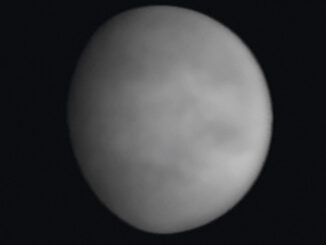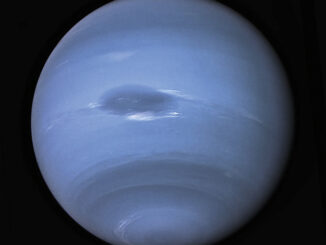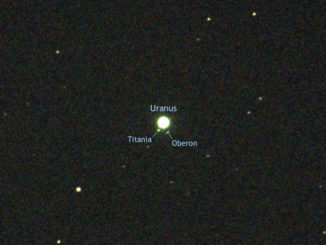
Neptune




Venus dazzles at dusk and closes in on Neptune
Even casual skywatchers cannot fail to notice brightest planet Venus currently hanging like a lantern above the southwest horizon at dusk. But as Venus moves eastwards through Aquarius on successive nights, it draws closer to outermost (and faintest) planet Neptune until the pair reach a particularly close conjunction on the UK evening of Monday, 27 January.

See the waxing Moon meet the outermost planet on 10 October
The 12-day-old Moon lies in the same low-power binocular field as Neptune late into the evening of Thursday, 10 October 2019 when observers in the UK can find the pair highest in the southern sky against the constellation of Aquarius. The glare of the gibbous Moon will present a challenge, but well worth the attempt to find the outermost planet with modest optical aid.

Watch Comet Africano (C/2018 W2) pass closest to Earth in late September
At around magnitude +9, C/201 W2 (Africano) is the brightest comet currently on show, passing closest to Earth on 27 September slightly less than half an astronomical unit away. Speeding through the constellations of Pegasus, Pisces and Aquarius, Comet Africano also lies within a binocular field of view of outermost planet Neptune on the night of 3–4 October.

See prime-time Neptune’s close encounter with star φ Aquarii during September
Neptune reaches opposition on 10 September 2019 having returned to Aquarius, the constellation in which it was discovered in 1846. We show you how to locate the outermost planet using binoculars, a task made easier this month due to Neptune’s close passage to naked-eye star phi (φ) Aquarii on 6 September.


See Mars get very close to Neptune at dusk on 7 December
Observers in the British Isles looking due south close to 6pm GMT on Friday, 7 December will find magnitude +0.1 planet Mars about 30 degress, or a span and a half of an outstretched hand at arm’s length, above the horizon. What you won’t see unless you have binoculars or a small telescope is that magnitude +7.9 outermost planet Neptune lies just one-tenth of a degree from the Red Planet.

Star-hop your way to viewing planets Uranus and Neptune at their best
Clear nights of early Northern Hemisphere autumn offer ideal opportunities to track down the two outermost planets of the solar system, Uranus and Neptune. What’s more, you don’t need a big telescope to find them. We show you how to locate these gas giants using binoculars. The Moon also passes close to Neptune on 20 October.
